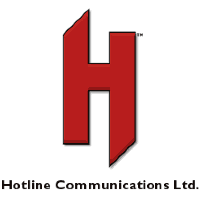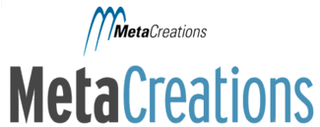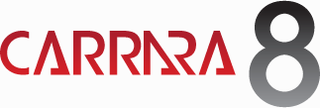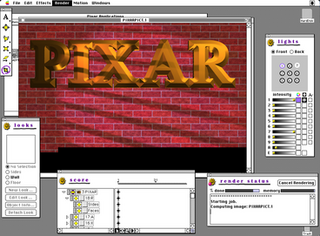Related Research Articles

Macworld is a digital magazine and website dedicated to products and software of Apple Inc., published by Foundry, a subsidiary of IDG.

AppleWorks was an integrated office suite containing a word processor, database, and spreadsheet. It was developed by Rupert Lissner for Apple Computer, originally for the Apple II and launched in 1984. Many enhancements for AppleWorks were created, the most popular being the TimeOut series from Beagle Bros which extended the life of the Apple II version of AppleWorks. Appleworks was later reworked for the Macintosh platform.

Connectix Corporation was a software and hardware company that released innovative products that were either made obsolete as Apple Computer incorporated the ideas into system software, or were sold to other companies once they became popular. It was formed in October 1988 by Jon Garber; the dominant board members and co-founders were Garber, Bonnie Fought, and close friend Roy McDonald. McDonald was still Chief Executive Officer and president when Connectix finally closed in August 2003.

Bryce, also often referred to colloquially as Bryce3D, is a 3D modeling, rendering and animation program specializing in fractal landscapes. The name is taken from Bryce Canyon—a rugged region with many of the same landscapes that were first simulated with the software.

WriteNow is a word processor application for the original Apple Macintosh and later computers in the NeXT product line. The application is one of two word processors that were first developed with the goal that they be available at the time of the Mac product launch in 1984, and was the primary word processor for computers manufactured by NeXT. WriteNow was purchased from T/Maker by WordStar in 1993, but shortly after that, WordStar merged with SoftKey, which ultimately led to its discontinuation. It had a combination of powerful features, excellent performance, and small system requirements.

Radius Inc. was an American computer hardware firm founded in May 1986 by Burrell Smith, Mike Boich, Matt Carter, Alain Rossmann and joined by other members of the original Macintosh team like Andy Hertzfeld. The company specialized in Macintosh peripherals and accessory equipment. It completed its IPO in June 1990.
The Apple community is the users, media, and third party companies interested in Apple Inc. and its products. They discuss rumors, future products, news stories, and support of Apple's products. Apple has a cult-like following, especially for the Apple II, Macintosh, iPod, iPhone, and luminary staff members. The personal computer revolution, mixed with Apple's vertical integration of its products and services, has increased popularity. Apple's corporate policy of extreme secrecy about future products intensify interest in the company's activities.

Hotline Communications Limited (HCL) was a software company founded in 1997, based in Toronto, Canada, with employees also in the United States and Australia. Hotline Communications' main activity was the publishing and distribution of a multi-purpose client/server communication software product named Hotline Connect, informally called, simply, Hotline. Initially, Hotline Communications sought a wide audience for its products, and organizations as diverse as Avid Technology, Apple Computer Australia, and public high schools used Hotline. At its peak, Hotline received millions of dollars in venture capital funding, grew to employ more than fifty people, served millions of users, and won accolades at trade shows and in newspapers and computer magazines around the world.

Now Software was the producer of Now Up-to-Date & Contact, a calendaring software and contact manager for individuals and groups, for macOS and Windows. The company was incorporated in 1989.
Canvas X is a drawing, imaging, and publishing computer program from Canvas GFX for personal computers.
The Eovia Corporation was founded in November 2000, with offices in both the US and France. The company's 3D computer graphics software products were aimed towards professional and amateur artists, with a focus on remaining accessible in price and usability.
StrataVision 3D is a comprehensive 3D computer graphics software package developed by Strata. Features include primitives-based modeling with texturising, keyframe animation, raytrace and later radiosity rendering under the name of Raydiosity.

MetaCreations was a computer software company that was best known for its graphics applications, notably Ray Dream Studio/Infini D, Fractal Design Painter, Bryce, and Kai's Power Tools.
MORE is an outline processor application that was created for the Macintosh in 1986 by software developer Dave Winer and that was not ported to any other platforms. An earlier outliner, ThinkTank, was developed by Winer, his brother Peter, and Doug Baron for Apple II, Apple III, PC and then ported by Peter to the Macintosh.

Carrara is a full-featured 3D computer graphics application featuring figure posing and editing, as well as nature modeling, in addition to traditional modeling, animation, texturing and rendering. The software is also capable of dynamic hair and fur simulations, particle effects, soft body and rigid body dynamics. Carrara is now owned and developed by Daz 3D. Carrara is compatible with Poser and Daz Studio formats of 3D figures and props. It is further supported by a number of 3rd party plug-ins and add-ons.
T/Maker was one of the first spreadsheet programs designed for the personal computer user and released by Peter Roizen in 1979. The application ran on CP/M, TRSDOS, and later on MS-DOS computers. T/Maker was originally distributed by Lifeboat Associates of New York.

The Apple AudioVision 14 Display is a 14-inch Trinitron display that was manufactured by Apple Computer Inc.
Ray Dream Studio was a low-end 3D modeling software application. Initially developed by Ray Dream, Inc. in 1989-1991 for the Macintosh, it was acquired and upgraded over the course of mergers with Fractal Design and MetaCreations. Ray Dream was less expensive than most other offerings, renowned for its ease of use, and boasted an impressive feature set including a sophisticated shader editor. Other software programs from the same developers, such as Fractal Design Painter 3D, were often introduced in basic form to the suite. A moderately limited version lacking animation capability was sold for $99 as Ray Dream Designer, and quickly became a mass-market favorite.

Typestry is a 3D software program released in the 1990s by Pixar for Apple Macintosh and Windows-based PC computer systems. Unlike general purpose modellers and renderers, Typestry concentrated on rendering and animating text entered by the user in multiple fonts. The fonts were extruded into three dimensions, with various bevel styles and textures applied during rendering. Typestry creates 3D text with Type 1 and TrueType fonts and can do many different effects:
References
- ↑ Donohoe, Brendan and Levine, Adam (1996). Infini-D Revealed, Hayden Books, ISBN 1-56830-222-3.
- ↑ Specular BackBurner product page on the Wayback Machine (1997)
- ↑ Szabo, Michelle (1996). Learn 3D Design on the Macintosh, John Wiley & Sons, ISBN 0-471-14927-6.
- ↑ "Infini-D Product Reviews on the Wayback Machine (1997)". Archived from the original on December 5, 1996. Retrieved 2 December 2013.